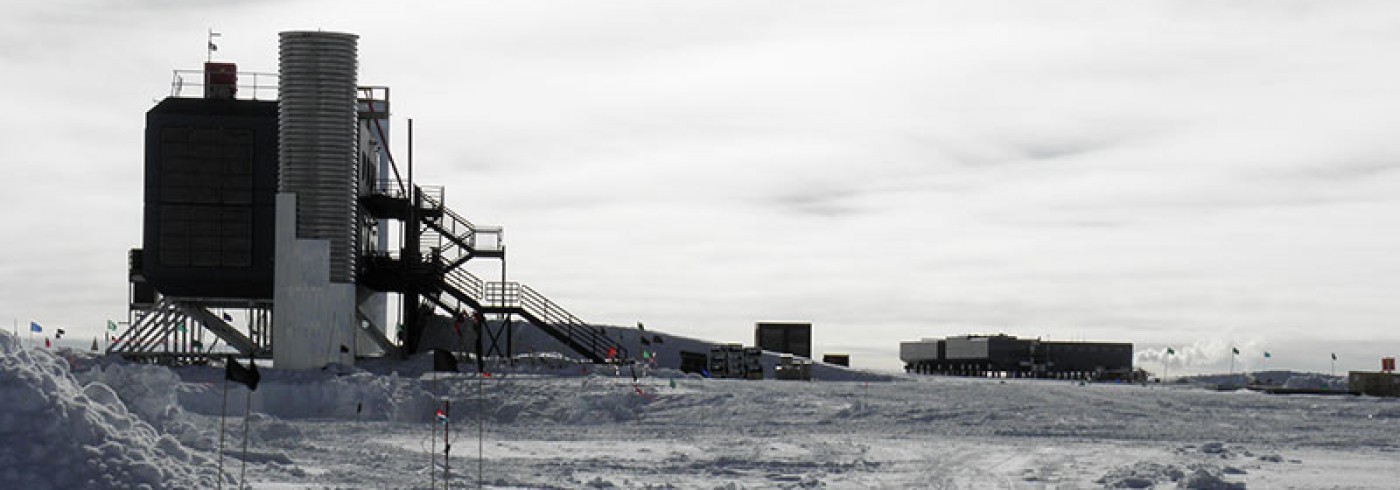IceCube − the world’s biggest neutrino telescope
30 November 2010 - 10 February 2011What does the dark matter in the universe consist of? There is six times as much dark matter in the universe as there is normal matter, made of atoms. Where does the very highest energy cosmic radiation come from? How can particles be accelerated to the tremendously high energy levels that have been observed? These are some of the questions that we hope the IceCube telescope will be able to answer. The answers to these questions will contribute to our understanding of the evolution of the universe from the Big Bang (13.7 billion years ago) to the present day.
Building something big to catch something small
IceCube is a gigantic telescope that detects neutrino particles from space. Its construction began during the 2004/05 Antarctic season at the Amundsen-Scott research station at the geographical South Pole. The completed telescope consists of 5,160 light detectors buried in 86 holes at depths ranging from 1,450 to 2,450 metres. The ice at these depths is highly transparent.
Neutrinos are particles that seldom interact with matter, making it necessary to build large detectors in order to have a chance of observing any. IceCube measures 1 km3 in size and weighs roughly 1 gigatonne. Neutrinos are created in space through various processes. When a neutrino does happen to interact in the ice, light may be registered by the light detectors, and this information will be used to determine the direction of the incoming neutrino.
A 2,460 metre deep water-filled hole with a diameter of roughly 60 cm is drilled using an enhanced hot-water drill. The light detectors are lowered down the hole, where they freeze in place after about two weeks. On December 18 2010 the last and 86th hole was completed (see picture 3). Sweden contributed two drilling engineers and four physicists for the entire season. A total of up to 50 people are working on IceCube during the drilling season, with 30 of them involved in the actual hot-water drilling.
Articles about particles
We have acquired data from the then-existing strings every year since 2005, and published numerous reports. We have analysed some 60,000 neutrinos (data acquired through 2009) that were created in collisions between cosmic radiation and the atoms of the earth’s atmosphere, although no extraterrestrial neutrinos have been identified so far. Since 2006, 30 articles involving IceCube results have been published in peer-reviewed journals, along with some 30 articles involving data from amanda, the former detector located at the same site. IceCube is taking data with the entire detector since May 2011 and is expected to continue for 15−20 years. IceCube is a major international project involving over 250 researchers from 11 countries.















